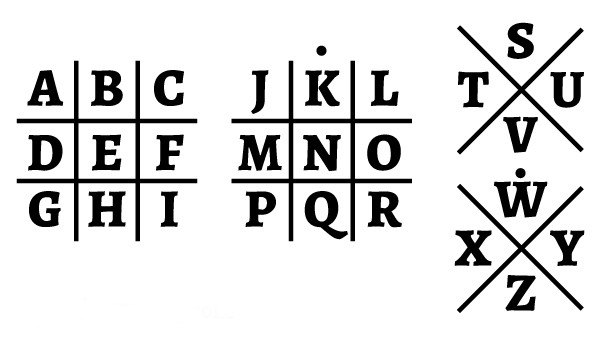The Pigpen Cipher, also known as the Freemason’s Cipher, is a simple yet intriguing substitution cipher that has been used for centuries to encrypt messages. It is closely associated with the Freemasons, a fraternal organization known for its use of cryptic symbols and secretive traditions. Despite its age, the Pigpen Cipher remains a popular method of encoding messages due to its visual appeal and historical significance.
Origins and History
The origins of the Pigpen Cipher are somewhat unclear, but historical records indicate that it was used as early as the 16th century. It gained prominence among the Freemasons in the 18th century, who used it to encode messages and mark documents. The cipher has also appeared in various Masonic manuscripts and has been associated with other secret societies throughout history.
How the Pigpen Cipher Works
The Pigpen Cipher is a substitution cipher, meaning each letter in the alphabet is replaced by a symbol derived from a grid system. The traditional Pigpen grid consists of two main components:
- A 3×3 Grid – The first nine letters of the alphabet (A-I) are placed in a tic-tac-toe-style grid.
- A Second 3×3 Grid with Dots – The next nine letters (J-R) follow the same pattern but with dots inside each section.
- An X-Shaped Grid – The last eight letters (S-Z) are arranged within an X shape, following the same logic, with and without dots.
Each letter is represented by the section of the grid it resides in, turning the message into a series of geometric shapes rather than traditional text.

Usage in Freemasonry
The Freemasons valued secrecy and discretion, which made the Pigpen Cipher an ideal method for protecting their communications. It was often used to mark tombstones, encrypt lodge documents, and encode ritual instructions. Many Masonic lodges incorporated the cipher into their symbolism, making it an integral part of their mystique.
Modern Applications
Despite its simplicity, the Pigpen Cipher is still used today for puzzle design, treasure hunts, escape rooms, and cryptography challenges. It frequently appears in popular culture, including books, movies, and video games featuring secret societies and hidden codes.
Deciphering the Code
Deciphering a Pigpen-encoded message requires familiarity with the grid system. Once the key is known, reading a Pigpen message is straightforward:
- Identify the shape of each symbol.
- Match it to the corresponding section of the grid.
- Replace the symbol with the correct letter.
For example, a symbol resembling an L-shape corresponds to the letter A, while a similar shape with a dot might correspond to J.
Conclusion
The Masonic Pigpen Cipher is a fascinating example of how symbolism and cryptography have intertwined throughout history. While not the most secure encryption method by modern standards, its historical and visual significance ensures that it remains a favorite among code enthusiasts, historians, and mystery lovers alike. Whether used for fun, education, or historical research, the Pigpen Cipher continues to captivate those intrigued by the world of hidden messages and secret societies.
